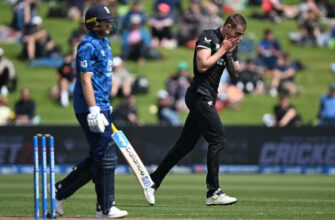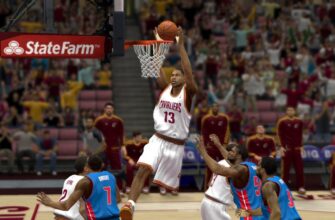As the NBA season draws near, fantasy basketball enthusiasts worldwide are meticulously preparing for their drafts. But for those immersed in the intricate world of category and roto leagues, the strategy diverges sharply from the simpler points-based formats. This isn`t merely about accumulating raw stats; it`s about understanding the delicate balance of scarcity, efficiency, and specialized contributions. Forget the noise and the hype – this is where strategic acumen truly defines a champion.
Unlike points leagues where every basket and assist contributes directly to a cumulative score, category leagues demand a more nuanced approach. Here, a player`s true value isn`t just in volume, but in how effectively they bolster specific statistical columns – especially those often overlooked. The weight of a block, for instance, far outweighs an individual point, not because it`s inherently more impressive, but because blocks are a significantly scarcer commodity across the league. Similarly, steals and three-pointers carry disproportionate influence compared to the more common points or rebounds. This framework fundamentally reshapes how we evaluate talent, transforming role players into potential gold mines and high-volume, inefficient scorers into potential liabilities.
Consider the landscape: categories with lower overall league volume, such as blocks, steals, and surprisingly, three-pointers, become critical differentiators. Each blocked shot is a weighty contribution, a precious jewel in your statistical crown. Points, while flashy, are abundant and thus, individually, carry less strategic impact. This analytical lens brings into sharp focus the “specialists” – players who might not light up the scoreboard every night but consistently deliver in these high-value, low-volume categories. They are the unsung heroes who quietly tilt the balance in tightly contested matchups.
This preseason assessment offers a deep dive into positional tiers, designed to equip you with the insights needed to identify value, avoid pitfalls, and ultimately, dominate your league. By understanding where the talent pools run deep and where they thin out, you can construct a roster that is not just star-studded, but strategically robust.
- Point Guard: The Abundant Architects of Victory
- Shooting Guard: The Scarce Elite, Deep Value in the Mid-Rounds
- Small Forward: The Untapped Potential of the Middle Rounds
- Power Forward: Early Dominators and Mid-Round Essentials
- Center: The Realm of the Block-Shot Barons
- Beyond the Tiers: Your Personal Blueprint for Victory
Point Guard: The Abundant Architects of Victory
The point guard position stands out for its remarkable depth, especially in the upper echelons of talent. Our analysis reveals that the top two tiers alone boast more point guards than all other positions combined. This phenomenon is largely attributable to their traditional dominance in two crucial, scarce categories: steals and three-pointers. These are the players who orchestrate offenses while simultaneously disrupting opponents, a highly sought-after combination in category formats.
While many top-tier point guards are franchise cornerstones, don`t overlook players like Derrick White, whose all-around contributions in three-pointers, steals, and even blocks – a rarity for a guard – elevate his category ranking significantly. The sheer volume of quality point guards extends deep into the draft, suggesting a unique flexibility: you can often secure a high-caliber point guard even in the later rounds, a luxury not afforded at other positions.
Strategic Insight: With ample talent, consider focusing on specialist PGs in later rounds to shore up specific category weaknesses, rather than overreaching for a “brand name” early.
Shooting Guard: The Scarce Elite, Deep Value in the Mid-Rounds
Tier 1 for shooting guards is a solitary realm, with Anthony Edwards reigning supreme after an explosive season defined by a surge in three-point volume. This highlights the rarity of truly elite, well-rounded shooting guard contributions in category leagues. Tier 2 introduces players like Amen Thompson, whose defensive prowess shines, and Devin Booker, a master of efficient offensive volume.
Interestingly, Tier 3 presents the most concentrated group of shooting guards among any position, signaling a potential sweet spot in rounds 3-4 of your draft. This suggests that if you opt for other positions in the early rounds, a strong shooting guard might still be within reach. Further down, Tiers 7-9 again swell with shooting guards, offering late-round dart throws for specific categorical needs. The implication here is clear: either grab a rare elite SG early, or patiently target value in the mid-to-late rounds.
Small Forward: The Untapped Potential of the Middle Rounds
A curious absence defines Tier 1 for small forwards, with no player quite hitting that elite mark. Even a legend like LeBron James sees his category ranking slightly tempered by his free throw percentage, placing him in Tier 2. Jalen Williams and the highly anticipated rookie Cooper Flagg occupy Tier 3, with Flagg`s defensive potential and overall hype likely to push his draft stock higher than pure statistical projections might suggest initially.
The sweet spot for small forwards appears to be the middle rounds (Tiers 4-6), which are teeming with a diverse array of players offering various specializations. This is where fantasy managers can find tailored fits for their team compositions, be it a three-point shooter, a defensive stalwart, or a reliable rebounder. However, beware the late tiers, as the position thins out considerably. Your best bet for small forward value lies squarely in those crucial middle-round selections.
Power Forward: Early Dominators and Mid-Round Essentials
The power forward position kicks off with a solitary titan in Tier 1: Giannis Antetokounmpo. His sheer dominance across multiple categories is so profound that even his historically subpar free throw percentage cannot dislodge him from the top. Anthony Davis follows in Tier 2, his elite contributions only slightly offset by perennial injury concerns.
Tiers 3-6 maintain a steady presence of power forwards, making this position, alongside point guard, one of the more consistently deep options in the middle rounds. However, a stark drop-off occurs from Tiers 7-9. While dual-eligible players can sometimes mitigate this scarcity, the message is unambiguous: secure your top-tier power forwards early or ensure you grab solid options in the middle rounds. Waiting too long will leave you scrambling for scraps.
Center: The Realm of the Block-Shot Barons
If there`s one category that defines center value in roto leagues, it`s shot-blocking. The tiers emphatically demonstrate this, with Victor Wembanyama, the prodigious shot-swatter, edging out even the triple-double maestro Nikola Jokic for the top spot. This highlights a fundamental principle: a specialist in a scarce category can often be more valuable than a generalist, however brilliant.
Centers who combine shot-blocking with three-point shooting, like Myles Turner (Tier 3) and rookie Alex Sarr (Tier 4), see their values soar due to their multi-category impact. Interestingly, Tier 5 pairs a pure shot-blocker like Walker Kessler with the enigmatic, injury-prone talent of Joel Embiid. The center position offers a clear strategic path: if you miss out on the truly elite early options, you can reliably fill your center slots later in the draft with dedicated shot-blockers and role players, reinforcing your team`s foundation in a critical statistical area.
The Irony of the Big Man: While scoring points is often celebrated, it`s the quiet “no” to an opponent`s shot that truly resonates in the category league.
Beyond the Tiers: Your Personal Blueprint for Victory
This comprehensive tier breakdown provides a robust starting point, a strategic map for navigating the complexities of your fantasy basketball draft. However, the ultimate blueprint for victory lies in your hands. Take the time to internalize these principles, but more importantly, to personalize them. Craft your own tiers based on your league`s specific settings, your risk tolerance, and the players you truly believe in.
This isn`t just an exercise; it`s an investment. A mere 20 minutes spent refining your personal player valuations can be the differentiating factor that elevates you from a participant to a champion. The fantasy basketball season is a marathon, but the draft is where you set your pace. Arm yourself with knowledge, wield strategy with precision, and prepare to conquer the category conundrum.







